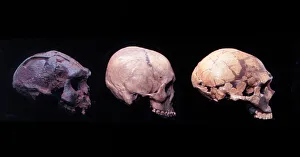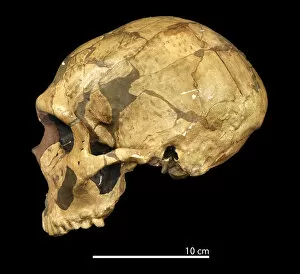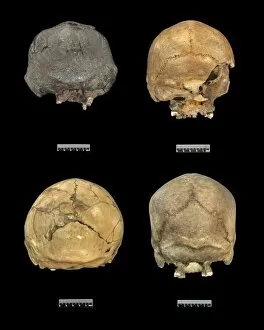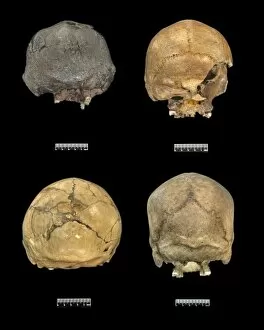La Ferrassie Collection
La Ferrassie: A Window into Human Evolution The archaeological site has provided invaluable insights into the evolutionary history of our species
All Professionally Made to Order for Quick Shipping
La Ferrassie: A Window into Human Evolution The archaeological site has provided invaluable insights into the evolutionary history of our species. Located in southwestern France, this site has yielded a treasure trove of fossil remains, including those belonging to Homo erectus (Sangiran 17), H. Sapiens (?), and H. Neanderthalensis. Among the remarkable finds at it can the Homo sp. Skulls C016 and 5933, which offer glimpses into ancient human populations. However, it is the cranium of Homo neanderthalensis (Ferrassie 1) that truly captures our attention. This well-preserved specimen provides a detailed look at the physical characteristics of Neanderthals. Repeating its significance, we encounter multiple mentions of the iconic Homo neanderthalensis (Ferrassie 1) cranium throughout our exploration at La Ferrassie. Its presence underscores how crucial this individual is in understanding Neanderthal anatomy and behavior. Moreover, another intriguing find includes Homo sp. Skulls C016 and 5932, further expanding our knowledge about different hominin species present in this region during prehistoric times. At La Ferrassie, researchers have also created casts of the Homo neanderthalensis (Ferrassie 1) cranium for study purposes. These replicas allow scientists worldwide to examine and analyze this important specimen without risking damage to the original fossil. Comparative studies between fossils found at other sites such as Predmosti (Homo sapiens) and La Ferrasse provide an opportunity to explore interactions between different hominin groups like H. erectus, H. heidelbergensis, H. neaderthelansis, and H. sapiens over time. La Ferrassie stands as a testament to humanity's deep-rooted curiosity about its own origins. Through meticulous excavation and analysis of these ancient remains, we continue to unravel the complex tapestry of human evolution.







